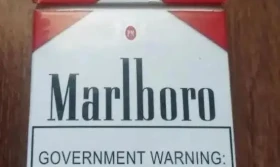Tobacco Use and Its Link to Beau’s Lines Formation in Nails
Introduction
Beau’s lines are horizontal depressions or grooves that appear across the fingernails or toenails. These lines often indicate an underlying health issue, such as malnutrition, severe infection, or chronic diseases. Recent studies suggest that tobacco use may also contribute to the formation of Beau’s lines. Smoking and other forms of tobacco consumption negatively affect circulation, oxygen supply, and nutrient absorption—all of which can impair nail growth and lead to visible deformities. This article explores the connection between tobacco use and Beau’s lines, examining the mechanisms, scientific evidence, and potential health implications.
Understanding Beau’s Lines
Beau’s lines are transverse indentations that occur when nail growth is temporarily disrupted. They typically appear after a significant physiological stressor, such as:
- Illness or infection (e.g., pneumonia, COVID-19)
- Nutritional deficiencies (e.g., zinc, protein deficiency)
- Chronic diseases (e.g., diabetes, peripheral vascular disease)
- Chemotherapy or medication side effects
- Physical trauma to the nail matrix
The lines grow out as the nail regenerates, but their presence often signals an underlying health concern.
How Tobacco Use Contributes to Beau’s Lines
Tobacco smoke contains thousands of harmful chemicals, including nicotine, carbon monoxide, and tar, which can impair nail health in several ways:
1. Reduced Blood Circulation and Oxygen Supply
Nicotine constricts blood vessels, reducing blood flow to the extremities, including the fingers and toes. Poor circulation deprives the nail matrix (the tissue responsible for nail growth) of essential oxygen and nutrients, leading to weakened and irregular nail formation.
2. Nutrient Depletion
Smoking interferes with the body’s ability to absorb vital nutrients, such as:
- Vitamin C (essential for collagen production)
- Zinc (critical for keratin synthesis)
- B vitamins (important for cell regeneration)
Deficiencies in these nutrients can slow nail growth and cause structural abnormalities like Beau’s lines.
3. Toxin Accumulation
Tobacco toxins can accumulate in keratinocytes (nail-forming cells), disrupting their normal function. Heavy metals like cadmium and arsenic, found in cigarette smoke, are particularly damaging to nail tissue.
4. Chronic Inflammation and Oxidative Stress
Tobacco use triggers systemic inflammation and oxidative stress, which can damage nail bed cells. Over time, this may lead to repeated interruptions in nail growth, resulting in multiple Beau’s lines.

Scientific Evidence Supporting the Link
Several studies highlight the relationship between smoking and nail disorders:
- A 2017 study in Clinical and Experimental Dermatology found that smokers were more likely to develop nail dystrophies, including Beau’s lines, compared to non-smokers.
- Research published in the Journal of the American Academy of Dermatology (2019) noted that nicotine-induced vasoconstriction contributes to poor nail plate formation.
- A 2021 review in Dermatologic Clinics linked smoking to delayed wound healing and abnormal keratinization, which may extend to nail deformities.
While more research is needed, existing evidence strongly suggests that tobacco use exacerbates nail health issues.
Other Nail Changes Associated with Tobacco Use
Beyond Beau’s lines, smoking can cause additional nail abnormalities, such as:
- Yellow Nail Syndrome (YNS): A condition where nails thicken, yellow, and grow slowly due to impaired lymphatic drainage.
- Brittle Nails: Reduced moisture and nutrient supply make nails prone to cracking and splitting.
- Clubbing: A deformity where fingertips enlarge and nails curve abnormally, often linked to chronic hypoxia (oxygen deprivation).
Prevention and Treatment
The most effective way to prevent tobacco-related Beau’s lines is to quit smoking or using tobacco products. Additional measures include:
- Improving Nutrition: A diet rich in vitamins (Biotin, Vitamin E), minerals (Zinc, Iron), and protein supports healthy nail growth.
- Hydration and Moisturization: Keeping nails and cuticles moisturized prevents brittleness.
- Regular Nail Care: Avoiding harsh chemicals and trauma reduces further damage.
- Medical Consultation: If Beau’s lines persist, consulting a dermatologist can help identify underlying conditions.
Conclusion
Tobacco use is a significant yet often overlooked contributor to Beau’s lines and other nail abnormalities. By impairing circulation, depleting nutrients, and introducing toxins, smoking disrupts normal nail growth. Recognizing this connection can motivate individuals to quit tobacco and adopt healthier habits. Since nails serve as a visible indicator of overall health, changes like Beau’s lines should not be ignored—they may signal deeper systemic issues requiring attention.
Tags: #BeausLines #NailHealth #TobaccoEffects #SmokingAndNails #Dermatology #NailDisorders










